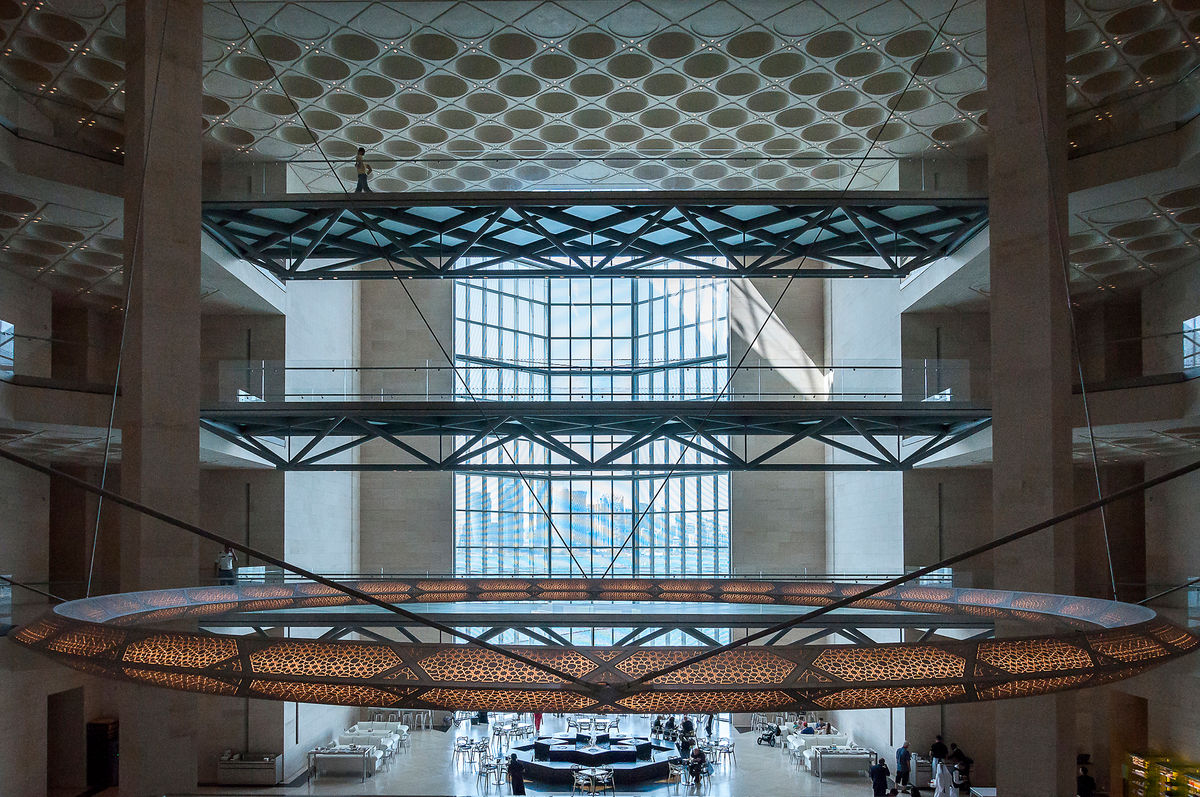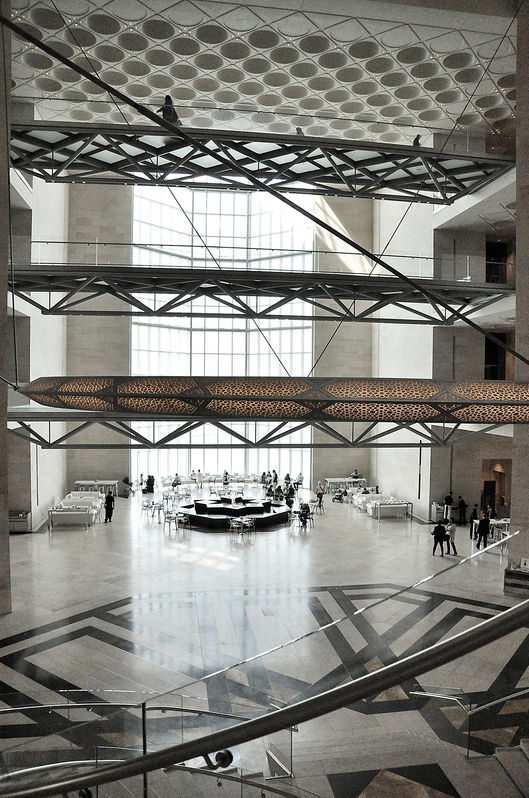Pygmalion Karatzas
Architectural, Fine Art & Commercial Photography
MUSEUM OF ISLAMIC ART
Doha, Qatar
designed by I.M. Pei Architects
Project ID:
Name: Museum of Islamic Art
Type: Public / Museum
Architects: I.M. Pei Architects
Location: Doha, Qatar
Photography: Pygmalion Karatzas
Photo shoot date: September 2013
Licensing client: I.M. Pei Foundation
Project description:
The Museum of Islamic Art is the result of a journey of discovery conducted by I.M. Pei, whose quest to understand the diversity of Islamic architecture led him on a world tour. During visits to the Grand Mosque in Córdoba, Spain; Fatehpur Sikri, a Mughal capital in India; the Umayyad Great Mosque in Damascus, Syria; and the ribat fortresses at Monastir and Sousse in Tunisia, he found that influences of climate and culture led to many interpretations of Islamic architecture, but none evoked the true essence he sought.Mr. Pei’s final design inspiration was the 13th-century sabil (ablutions fountain) of the Mosque of Ahmad Ibn Tulun in Cairo, Egypt (9th century). In the “austerity and simplicity” of the sabil, Mr. Pei stated, he found “a severe architecture that comes to life in the sun, with its shadows and shades of colour.” The sabil offered ―an almost Cubist expression of geometric progression,” which evoked an abstract vision of the key design elements of Islamic architecture.Declining to build the structure on any of the proposed sites along the Corniche, Mr. Pei suggested a stand-alone island be created to ensure future buildings would never encroach on the Museum. The building stands in the sea some 195 feet off Doha’s Corniche. A park of approximately 64 acres of dunes and oases on the shoreline behind the Museum offers shelter and a picturesque backdrop.Built of fine materials, such as cream-coloured Magny and Chamesson limestone from France, Jet Mist granite from the United States and stainless steel from Germany, as well as architectural concrete from Qatar, the Museum is composed of a five-storey main building and a two-storey Education Wing, which are connected across a central courtyard. The main building’s angular volumes step back progressively as they rise around a164-foot-high domed atrium, which is concealed from outside view by the walls of a central tower. At the top of the atrium, an oculus captures and reflects patterned light within the faceted dome. The desert sun plays a fundamental role, transforming the architecture into a play of light and shadows.A glass curtain wall on the north side of the Museum offers panoramic views of the Gulf and West Bay area of Doha from all five floors of the atrium. Ceilings are embellished with intricate coffered domes, and perforated metal chandeliers hang in the atrium. Two more lanterns, each 100 feet tall, mark the boat dock on the west side of the Museum, creating a grand entrance for guests arriving by boat.The galleries, designed by Jean-Michel Wilmotte from Paris, France feature dark grey porphyry stone and Louro Faya, a Brazilian lacewood that was brushed and treated to create a metallic appearance, which contrast with the light-coloured stonework of the rest of the Museum. To protect the fragile antiquities on display, the exhibition rooms feature specially designed cases and lighting. Mr. Wilmotte also created custom furniture for the museum, inspired by Pei’s architectural style. The Museum’s education programs are housed in a 29,000-square-foot wing, located to the east of the main building across a fountain courtyard. The Education Wing, scheduled to open late 2009, includes a light-filled reading room in the Museum library, classrooms, workshops, study spaces, and technical and storage facilities. Among the latter is the conservation laboratory, an important new resource for the entire region. Underscoring the central role of education in the Museum of Islamic Art, the Education Wing will host educational and community activities to develop and foster an understanding and appreciation for Islamic art.[text by Marcus Fairs, dezeen.com]
Links:
Vendors:
Publications:
Image Copyright: Rights-Managed © Pygmalion Karatzas.
Image Licensing: High-resolution images are available for editorial and limited commercial use.
Edition Type: Open edition print.
Fine Art Prints: Images are available in gallery-quality fine art prints on various sizes, media and framing options.
Please inquire for further information for usage licensing and prints.
Archive stat.:































